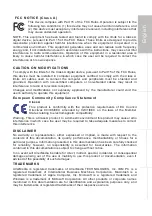
51
Flash Mode
Available Flash Modes
B
Notes About Shooting with the Flash
When using the flash at the wide-angle zoom position, the area around the image may be
dark depending on the distance to the subject.
This may be improved if you move the zoom control slightly toward the telephoto position.
C
The Flash Mode Setting
•
The setting may not be available with some shooting modes (
62).
•
The setting applied in
A
(auto) mode is saved in the camera’s memory even after the
camera is turned off.
C
Red-eye Reduction
Pre-flashes are fired repeatedly at low intensity before the main flash, reducing the red-eye
effect. If the camera detects red-eye while saving an image, the affected area is processed to
reduce red-eye before the image is saved.
Note the following when shooting:
•
Because pre-flashes are fired, there is a slight lag between when the shutter-release
button is pressed and when the image is shot.
•
More time than usual is required to save images.
•
Red-eye reduction may not produce the desired results in some situations.
•
In rare cases, red-eye reduction may be applied to areas of an image unnecessarily. In
these cases, select another flash mode and take the picture again.
U
Auto
The flash fires when necessary, such as in dim lighting.
•
The flash mode indicator is only displayed immediately after setting on the
shooting screen.
V
Auto with red-eye reduction
Reduce red-eye in portraits caused by the flash.
W
Off
The flash does not fire.
•
We recommend using a tripod to stabilize the camera when shooting in dark
surroundings.
X
Fill flash
The flash fires whenever a picture is taken. Use to “fill-in” (illuminate) shadows
and backlit subjects.
Y
Slow sync
Suited to evening and night portraits that include background scenery. The flash
fires when necessary to illuminate the main subject; slow shutter speeds are
used to capture background at night or under dim lighting.
















































